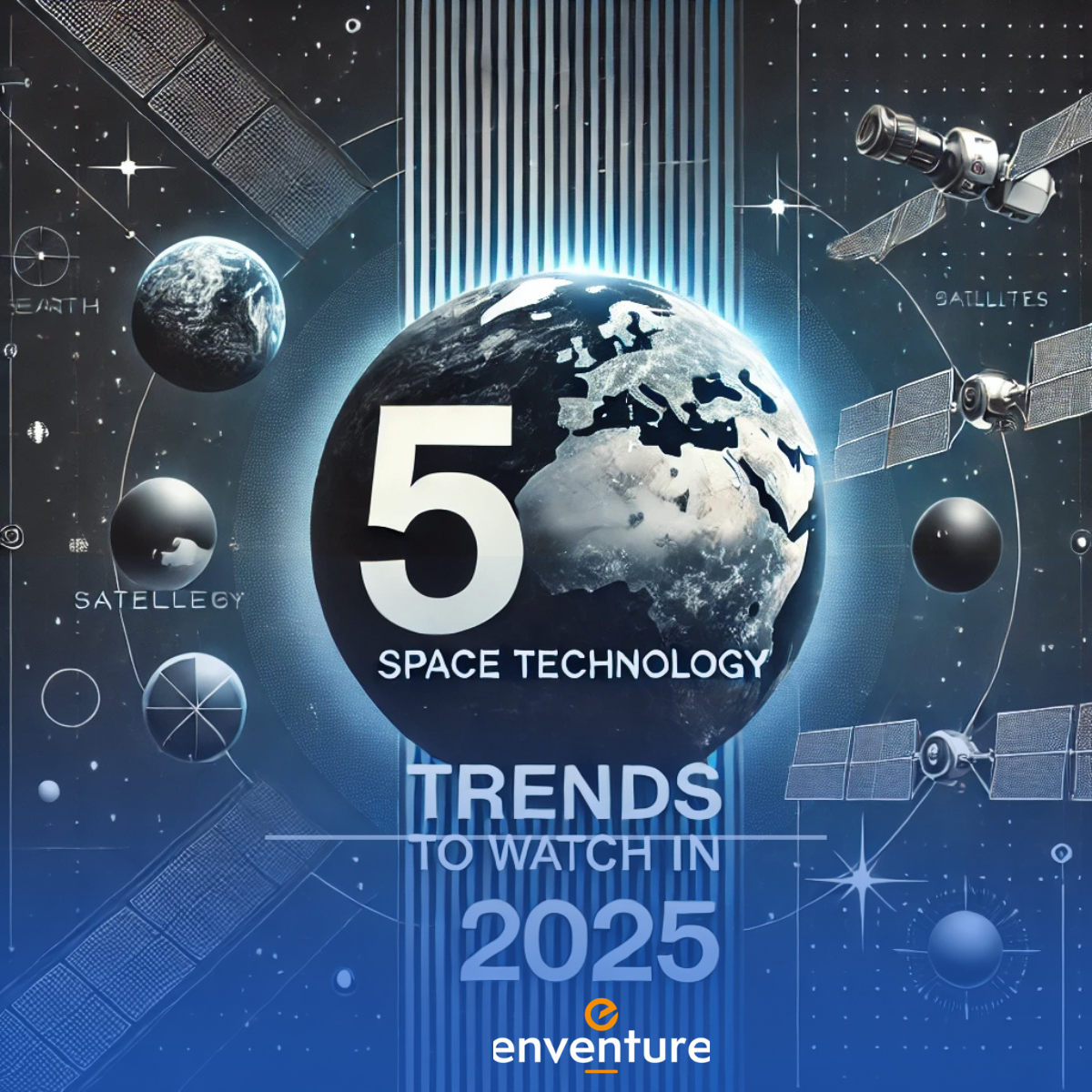Space exploration is evolving rapidly, with 2025 set to bring breakthroughs in propulsion, AI, satellites, and laser communication—reshaping both space and life on Earth.

By: Jessica Maldonado
2023 Spacetech Trends Post:
The way we explore space is changing faster than ever. In 2025, some incredible breakthroughs are set to take the stage—innovations that don’t just push the boundaries of what’s possible in space, but also have the potential to reshape life back here on Earth.
From smarter propulsion systems that bring Mars closer to reality, to satellites that make space more accessible than ever, these trends are opening doors to a future that once felt like science fiction. While we might not all be strapping into a rocket anytime soon, staying tuned to these developments will give us a front-row seat to the next big leaps in space exploration.
Here are five trends that are worth your attention as they redefine what humanity can achieve in the cosmos.
Revolutionizing Propulsion Systems
Technologies like Nuclear Thermal Propulsion (NTP) and electric propulsion are set to redefine space travel. NASA is investing $98 million in solar electric propulsion, while DARPA aims to demonstrate NTP in orbit by 2026. The market for electric propulsion systems is projected to grow from $8.25 billion in 2024 to $18.46 billion by 2033, with a CAGR of 9.45%.
Small Satellites Taking Over
CubeSats and NanoSats are driving innovation with affordable solutions for research and communication. In 2023, 396 nanosatellites were launched, and the global small satellite market is expected to grow from $4.9 billion in 2024 to $8.4 billion by 2033. SpaceX, producing 120 satellites monthly, highlights the rapid scaling of this trend.
The Rise of Commercial Space Stations
Private players like Axiom Space and Blue Origin are transforming space stations into hubs for tourism, research, and manufacturing. NASA plans to allocate up to $1 billion annually to support these efforts. Vast’s Haven-1, the first commercial space station, is set to launch by 2025, paving the way for new economic opportunities in space.
Laser Communication Breakthroughs
Laser-based systems are revolutionizing space data transfer with speeds of up to 10 gigabits per second. The market for laser communications is projected to grow from $760 million in 2024 to $4.88 billion by 2033, with a CAGR of 21.73%. This technology is critical for supporting future satellite and space station connectivity.
AI Transforming Space Missions
Artificial intelligence is unlocking the potential of space exploration by analyzing massive datasets and enabling autonomous missions. The AI market in space exploration is expected to grow from $4.44 billion in 2024 to $5.8 billion in 2025, with a CAGR of 30.5%. AI also improves data processing efficiency, leveraging the 90% of "dark data" previously left untapped.
The Big Picture
These trends reflect not only a new chapter in space exploration but also advancements that will ripple across industries on Earth. As 2025 unfolds, these technologies are worth following closely—they’re shaping the future of what’s possible.
Bold Moves,
Brighter Futures
Let's team up and make a difference.
Subscribe to our newsletter
Enventure is an exit-driven fund with high-yield opportunities in the healthcare, space, and green tech sectors across the US and India.
Mail Us
3103 Kewanee Ln,
Naperville, IL, 60564
Copyright © 2025 Enventure, all rights reserved.
